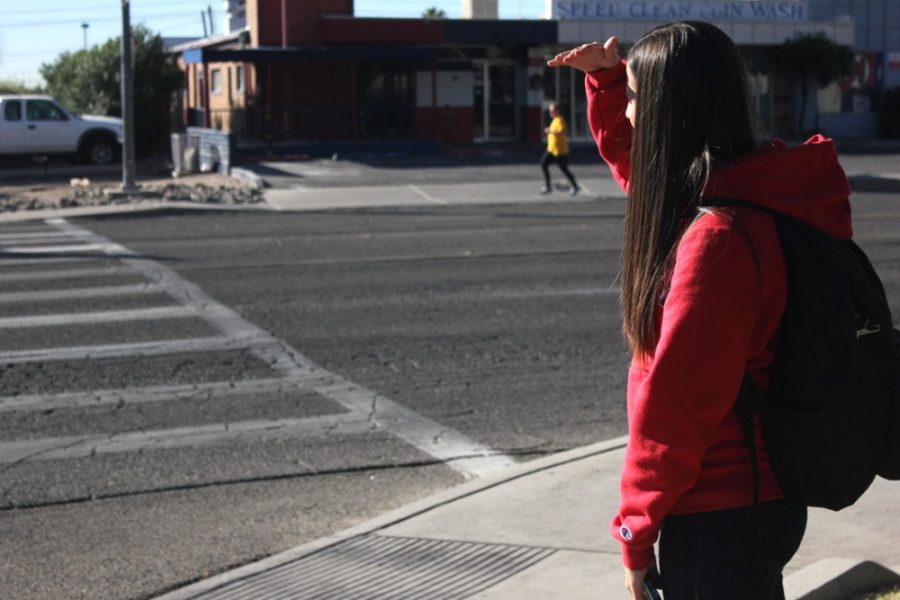A UA student took action regarding unlighted crosswalks and pedestrian safety after his personal experiences of nearly getting hit by vehicles.
Derek Hernandez, a communications junior, said he wanted a change to take place at an unlighted crosswalk that was on his way to school.
Hernandez said the crosswalk on the corner of Euclid Avenue and Sixth Street is dangerous, and he sent a letter to the mayor and other city officials asking for something about that specific location to be done.
“It’s very dangerous with the way cars come down that street, with some coming from Euclid Avenue and Sixth Street, where there is a light,” Hernandez said. “… [A] lot of times cars are coming off that green light and there is not enough time for them to stop. A lot of the times, they don’t stop and I find [that myself and others] were almost hit … because these cars can’t stop.”
Hernandez also said that he feels sometimes even though he waits for these cars, they speed up to avoid stopping for the pedestrian waiting.
There are several locations on and surrounding campus similar to the crosswalk that Hernandez deals with on Euclid Avenue and Sixth Street. Communications junior Kaeli Johnson walks through another crosswalk daily, which is on Euclid Avenue west of the Main Gate Parking Garage, and she expressed concern about the overall pedestrian safety with the crosswalk.
“It’s surprising to me we don’t have certain crosswalks that light up,” Johnson said.
Johnson, who has a class that ends at 8:30 p.m. on Mondays, also said she doesn’t feel safe walking home at night because of the unlit crosswalk.
“Numerous times, I feel like I have to stop in the middle of the crosswalk,” Johnson said. “In that area, there seems to be a lot of cars who have to come to a screeching stop.”
A study performed by the Federal Highway Adminstration found that High intensity Activated crossWalKs, which were developed in Tucson in the late 1990s, decreased the number of intersection-related crashes.
According to the FHW study, pedestrian crashes decreased by 86 percent at HAWK sites. However, for the 102 intersections that did not have lighted crosswalks, pedestrian crashes increased by 143 percent.
“Therefore, if citywide conditions were contributing to reductions in total crashes, these conditions were not having the same impact on pedestrian crashes, or other factors were contributing to a rise in pedestrian crashes at unsignalized intersections but not at signalized and HAWK intersections,” the study stated.
HAWK crossings give drivers multiple cues that there may be a pedestrian crossing a street. The background for the FHW study describes these cues as “a unique configuration of the HAWK beacon (two red lenses over a single yellow lens), high-visibility crosswalk markings (ladder-style markings as opposed to only two transverse white lines), a stop bar approximately [50 feet] from the crosswalk, 8-inch solid lane lines between through travel lanes, signs that can be illuminated and read ‘CROSSWALK,’ and School Warning signs.
When activated, the HAWK uses a red indication to inform drivers to stop, thereby creating a time period for pedestrians to cross the major roadway.”
The beacon is not illuminated until activated by a pedestrian, but after a set amount of time, it does inform drivers that they need to stop, allowing pedestrians to cross safely.
Hernandez will be eventually getting his light at the corner of Euclid Avenue and Sixth Street. After emailing city officials, he said he received a response from a city of Tucson Project Engineering Manager who told him that a stoplight at that location is funded.
“First they need to repave it and then they need to install a light and hopefully within the next year … they say [there will be a lighted crosswalk],” Hernandez said.
_______________
Follow Ariella Noth on Twitter.









